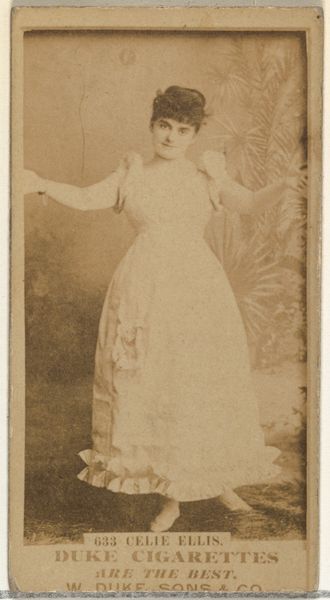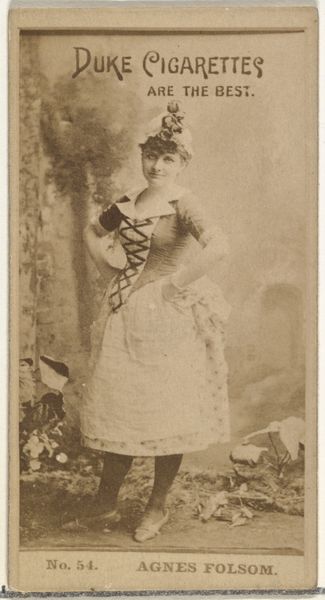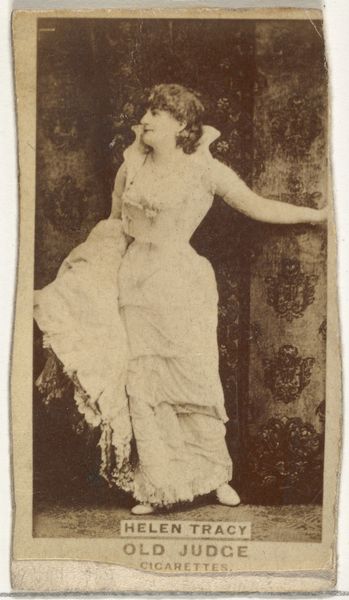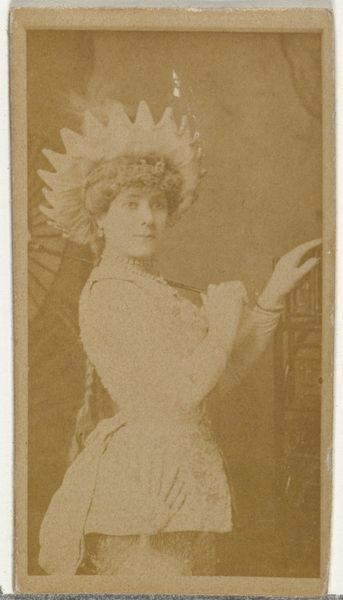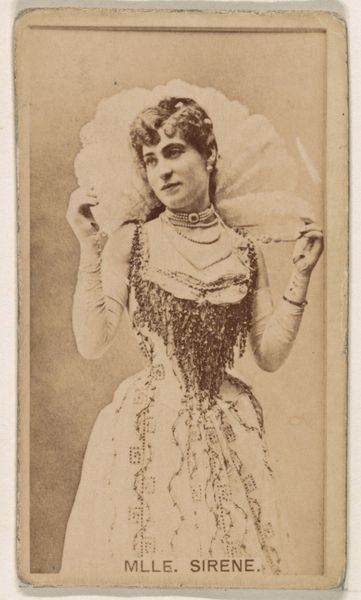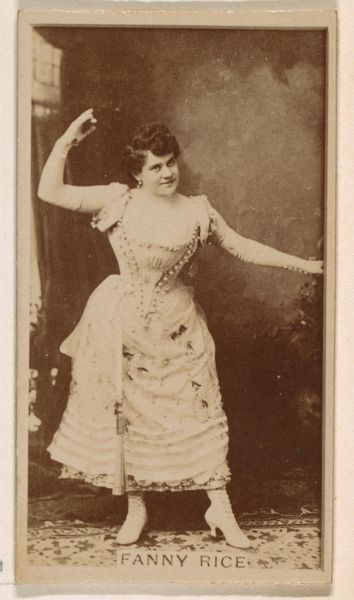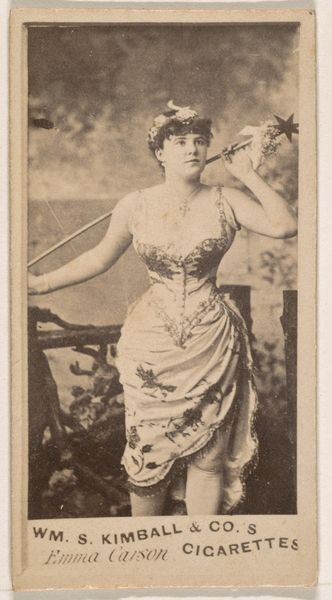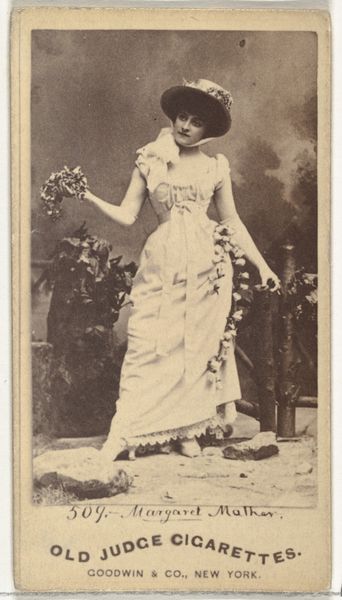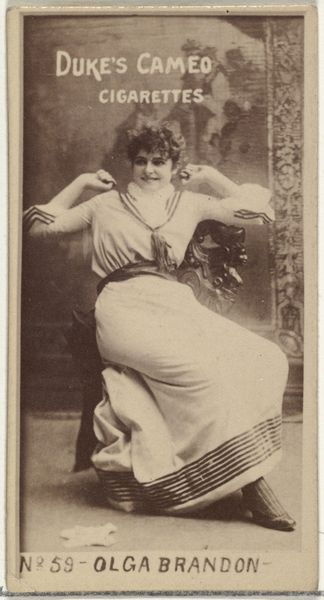
Le Viere, from the Actors and Actresses series (N45, Type 7) for Dixie Cigarettes 1885 - 1891
0:00
0:00
drawing, print, photography
#
portrait
#
drawing
# print
#
figuration
#
photography
#
19th century
#
men
#
realism
Dimensions: Sheet: 2 5/8 x 1 1/2 in. (6.6 x 3.8 cm)
Copyright: Public Domain
Curator: It feels like looking at a faded dream, doesn't it? This sepia-toned photograph captures a performer named Le Viere, frozen in a pose somewhere between defiance and invitation. Editor: Absolutely, there's something inherently performative about this image. This is a trading card, part of the Actors and Actresses series for Dixie Cigarettes, produced sometime between 1885 and 1891 by Allen & Ginter. It’s fascinating to see how advertising intersected with celebrity culture even then. Curator: Imagine finding this in your pack of cigarettes! Le Viere herself seems to be holding up what looks like two enormous ostrich feathers like delicate swords. She exudes this air of theatrical power, and vulnerability, all at once. I wonder who she was and what stories lay behind her gaze. Editor: Well, that is something these trading cards did; they created celebrity. While many actors and actresses achieved acclaim and notoriety through these methods, most individuals faded into obscurity as soon as another card or actor came onto the stage. What's also compelling is the format itself—photography reproduced as a small print intended for mass consumption and the ways class, labor, and artistry intertwined at the time. Curator: I find her costume quite revealing: the ornate dress; that dainty crown. This image seems so carefully constructed, not merely a portrait, but a whole persona. It makes me wonder about all the labor and artifice required to craft celebrity, even then, for someone to sell smoking products! Editor: Indeed! The photograph participates in the era's economy of image, performance, and consumerism. This card transformed Le Viere into a symbol – her image used to elevate and promote a product within a growing mass market. This tiny object reflects a wider trend in art where figuration, portraiture, and commercial needs merge. Curator: So true! Ultimately, I look at this artifact and sense something bigger than the commercial purpose behind it: A meditation of performance, femininity, and the fleeting nature of recognition itself. Editor: Right, and how images like this helped define what it meant to be modern and visible in that period.
Comments
No comments
Be the first to comment and join the conversation on the ultimate creative platform.
